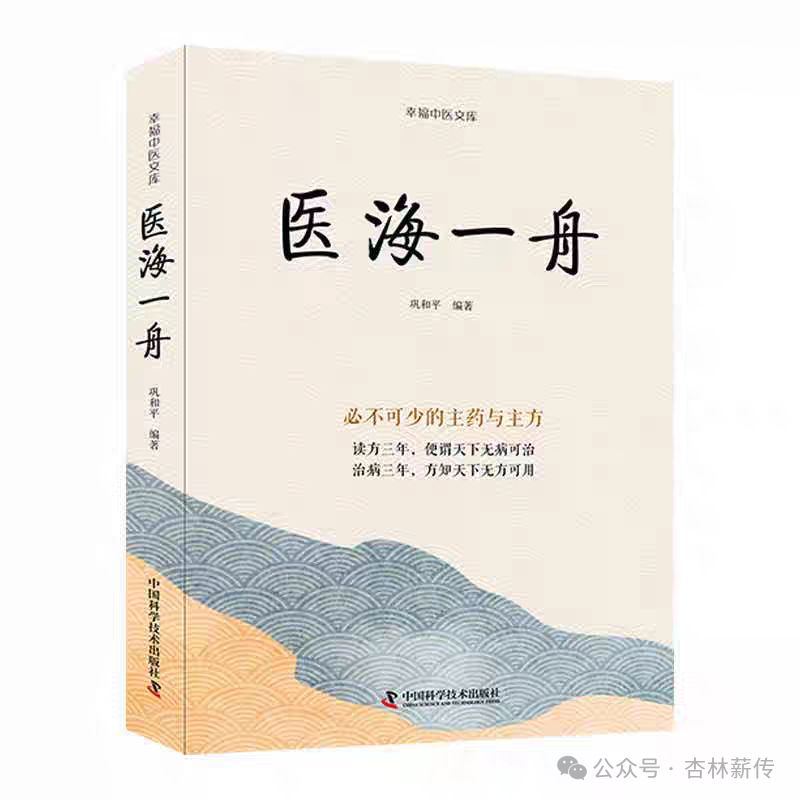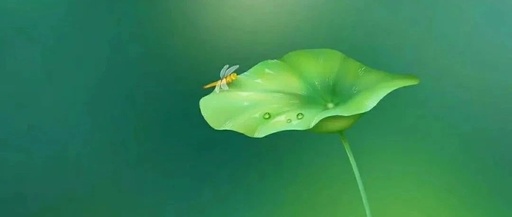and Effective Formulas for Trauma-Induced Swelling and Blood Stasis
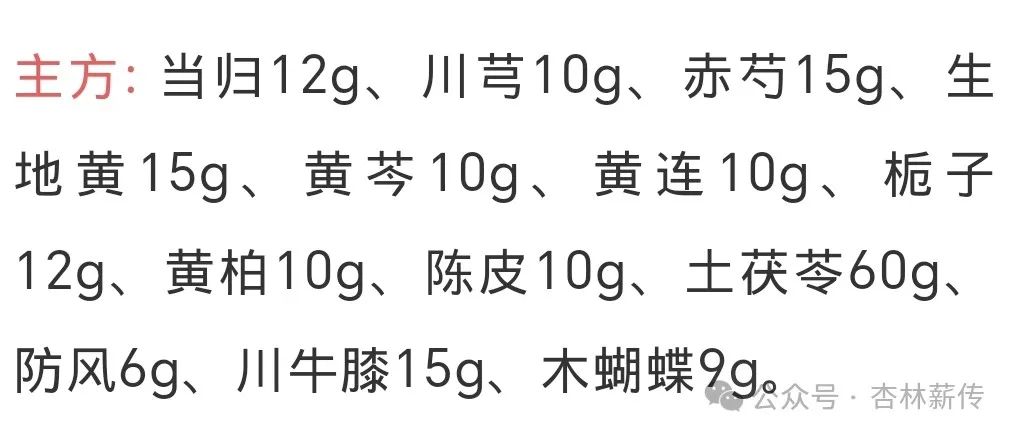
【Case 1】Swelling and Pain in the Knee After a Fall
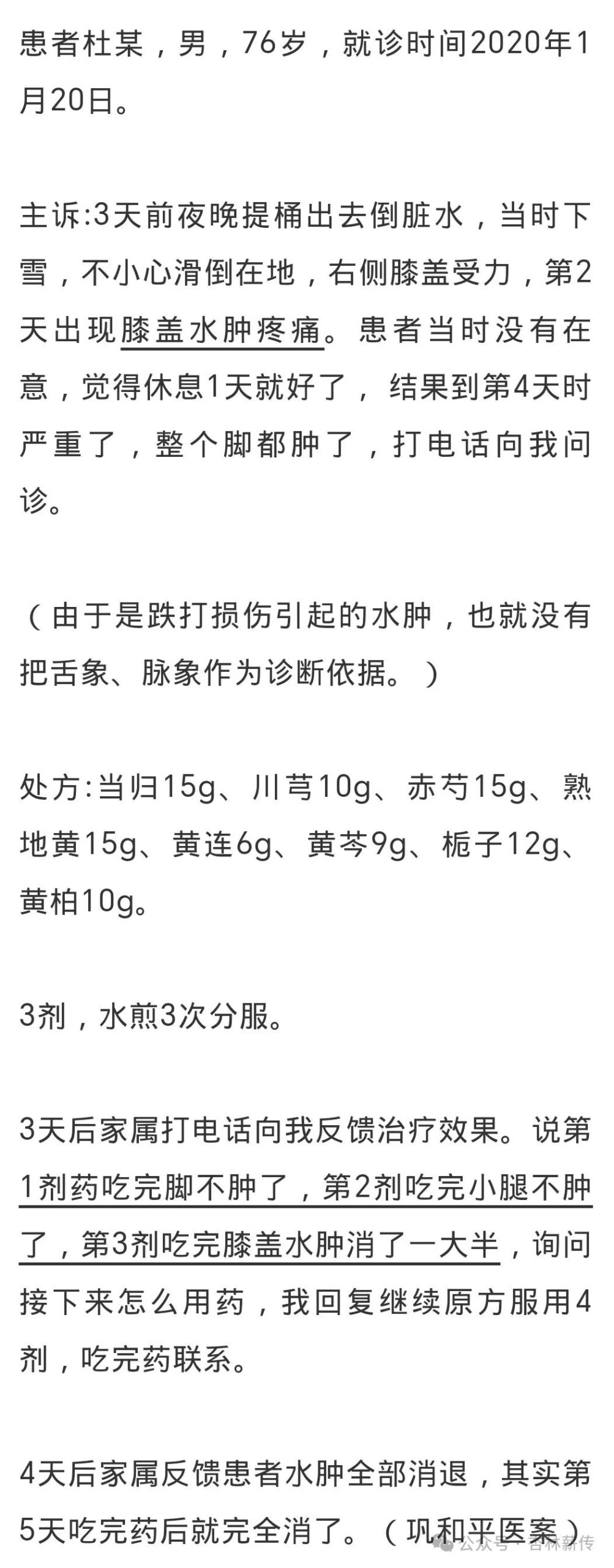
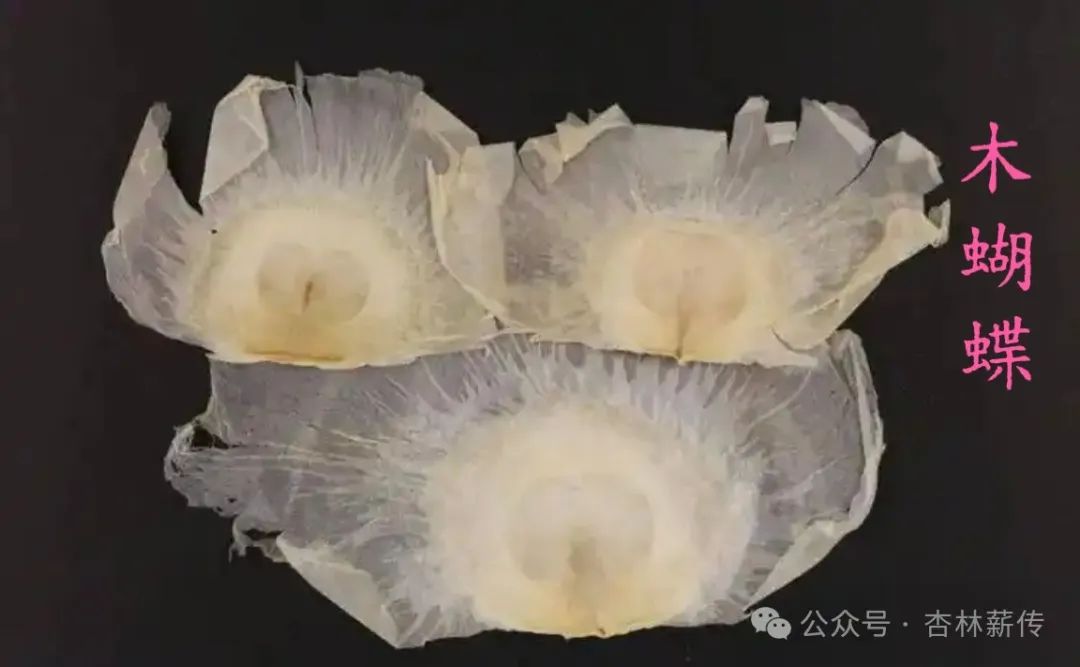
【Case 2】Severe Swelling of the Head and Face After a Bicycle Accident
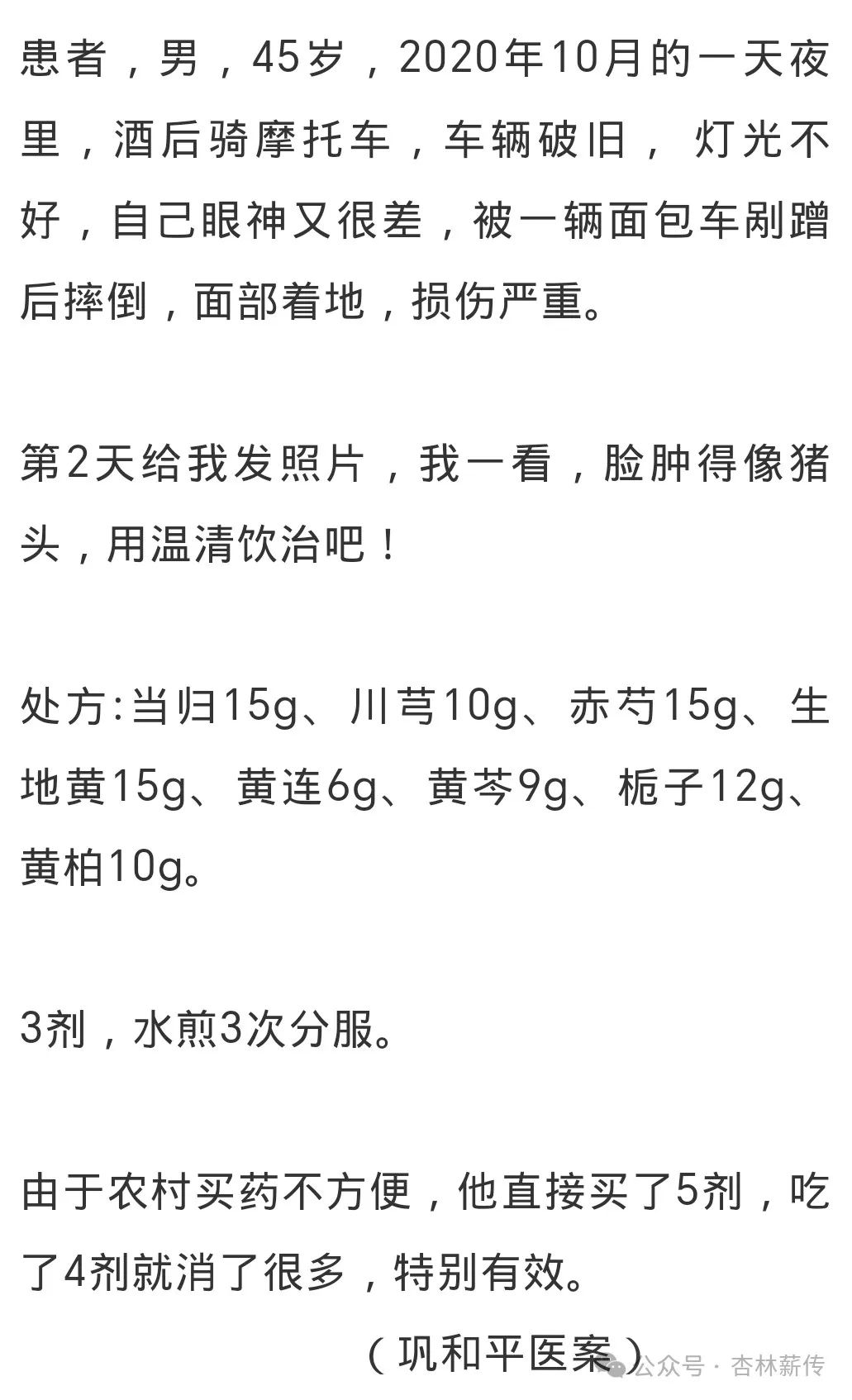
Note: This formula is based on the original recipe of Wenqing Decoction, which was used by the famous Qing Dynasty physician Gong Tingxian in “Wan Bing Hui Chun” to treat women with continuous bleeding, also known as treating “Beng Lou”. Its composition is a combination of Si Wu Decoction (Four Substance Decoction) and Huang Lian Jie Du Decoction (Coptis Decoction).
This formula was inspired by a theory mentioned by a participant during an academic exchange I attended in November 2019: Si Wu Decoction acts on the arteries, Huang Lian Jie Du Decoction acts on the veins, and Si Ni San (Frigid Extremities Powder) is used for the nerves. At that time, I thought this was a strange theory.
I did not pay much attention to it. Later, during another academic exchange, a colleague from Changzhi City, Shanxi Province, shared a case of using Wenqing Decoction to treat swelling and pain caused by trauma, which had excellent results, with just a few doses of medicine relieving pain and reducing swelling. This caught my attention. I then began to clinically test Wenqing Decoction for treating swelling and pain in the limbs, resulting in significant therapeutic effects.
Colleagues from Changzhi City shared the following case.
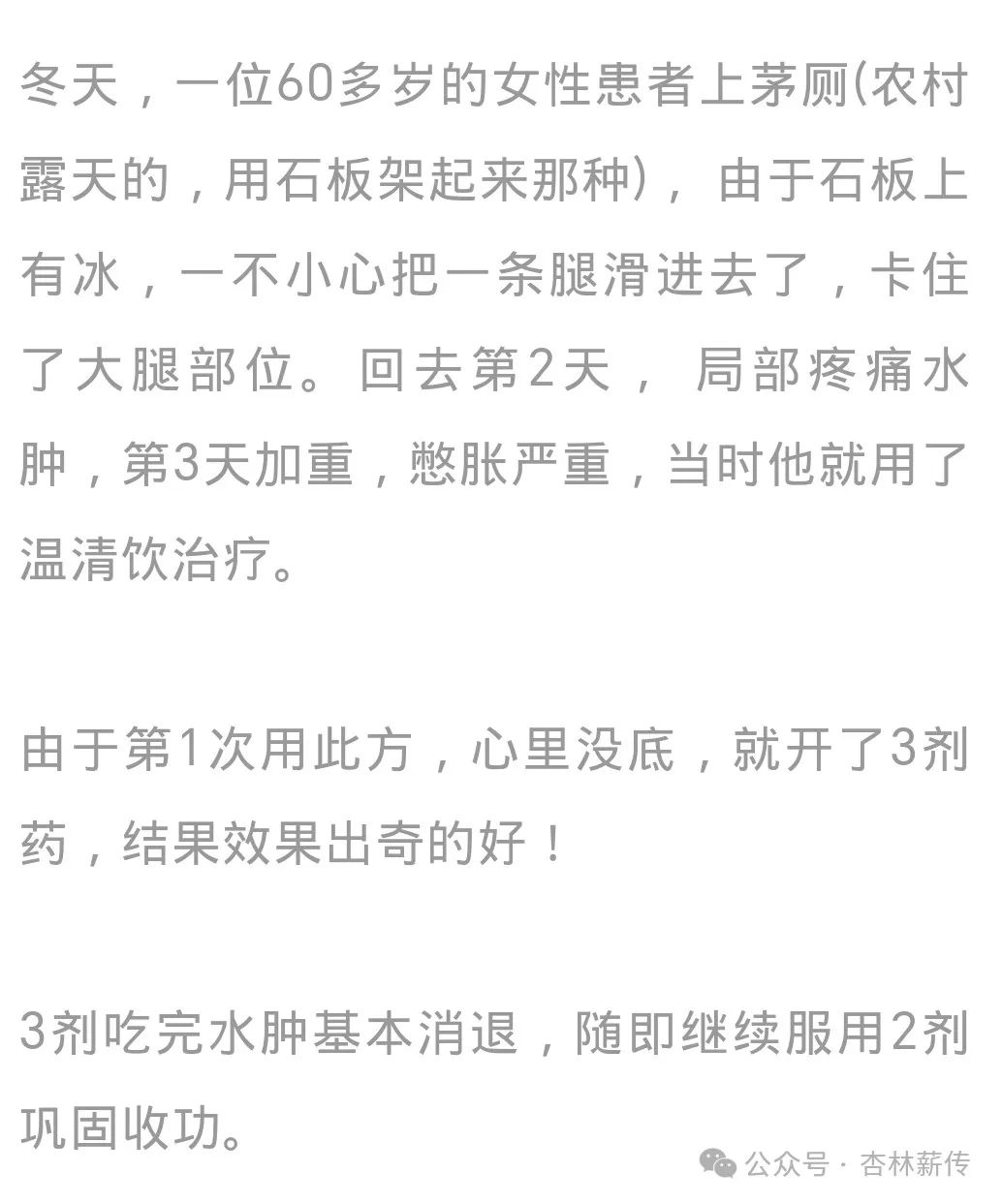
Inspired by this, in addition to using this formula to treat trauma-induced swelling and blood stasis, I also considered whether it could be applied to treat aseptic inflammation and other causes of swelling and blood stasis, such as knee joint effusion.
The idea was good, but reality is harsh. Only practice can lead to true knowledge. Coincidentally, a patient came for treatment.
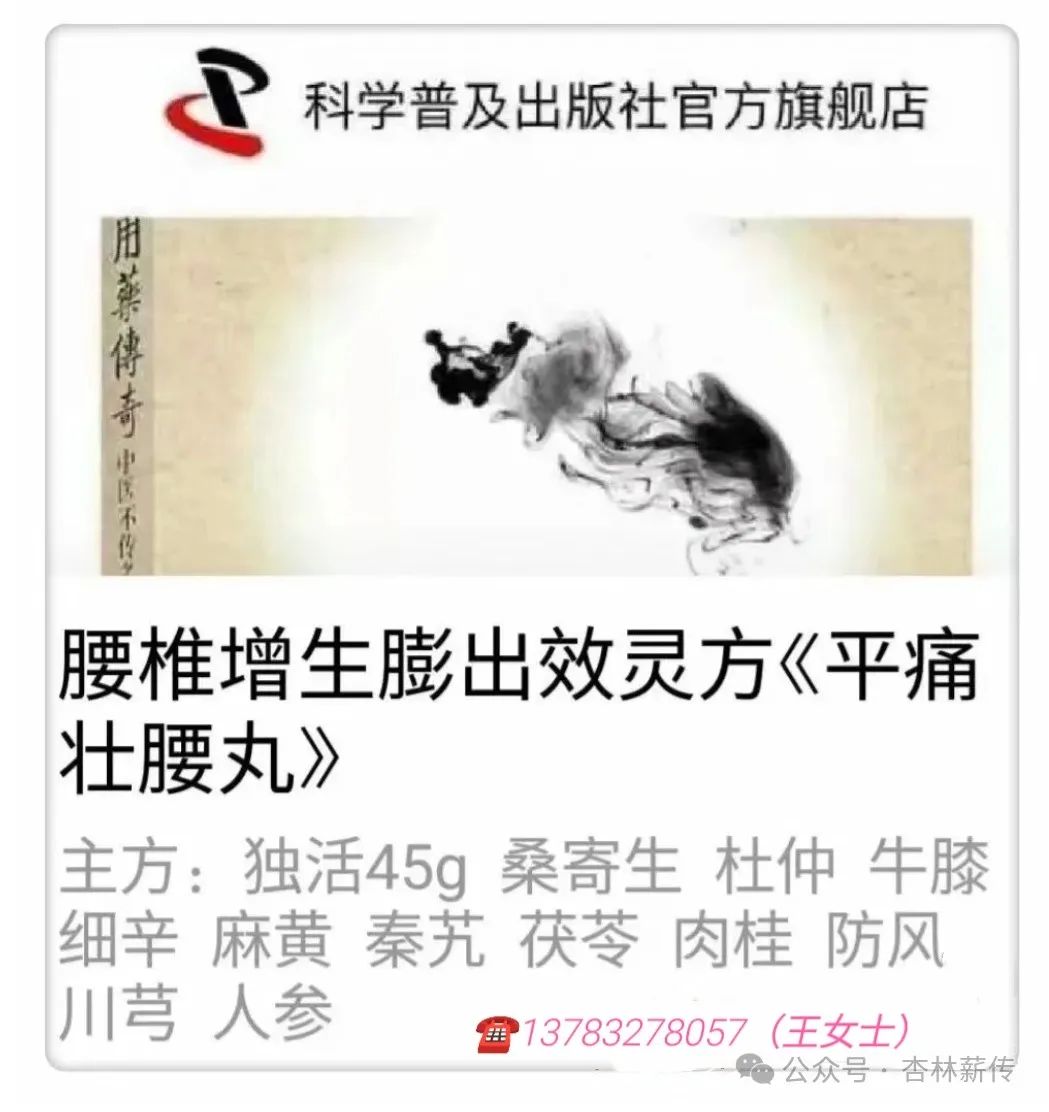
【Case 3】Knee Joint Effusion Without Apparent Cause, Western Medicine “Drains Water” but Recurs, Chinese Medicine Treatment Avoids Surgery
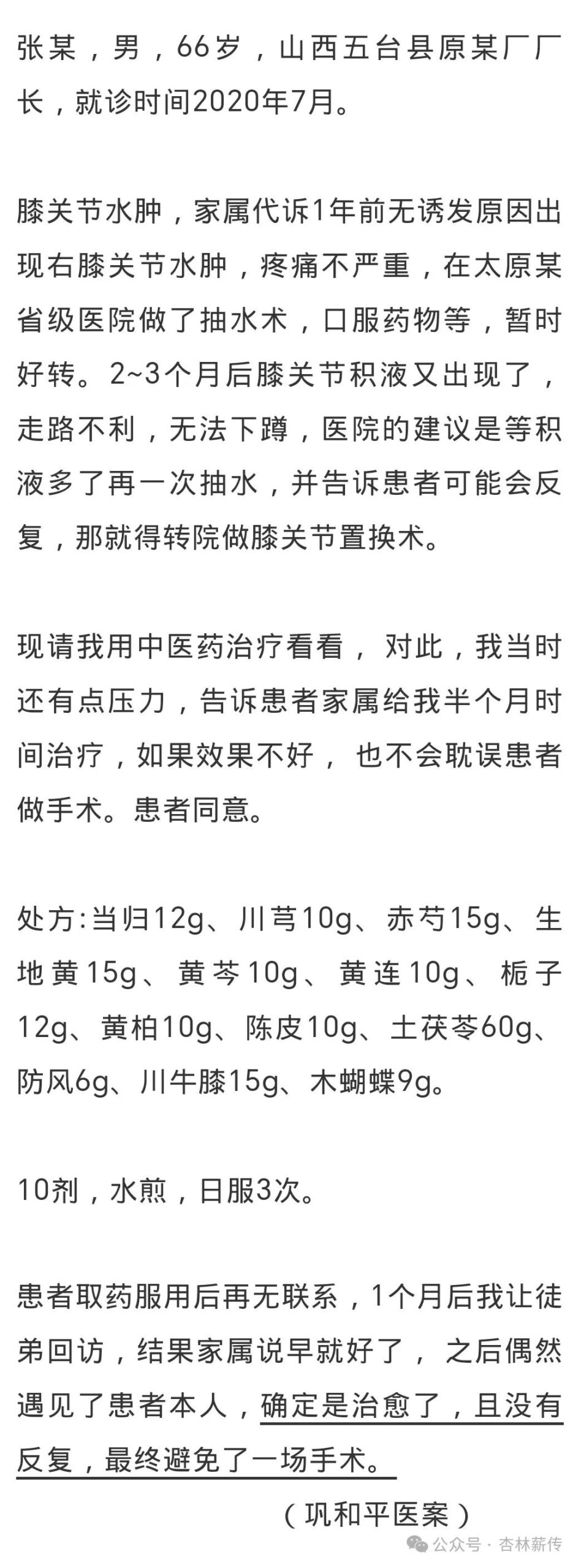

【Case 4】Multiple Effusions, High Erythrocyte Sedimentation Rate, Chinese Medicine Shows Rapid Effect!

In this formula, Zhi Zi (Gardenia) has anti-tuberculosis effects, while the other herbs clear heat and detoxify. All excess and external evil qi, I consider to be broadly defined as “toxins,” including tuberculosis bacteria. Currently, I find it easy to use Sheng Si Wu Decoction (Fresh Four Substance Decoction) and Huang Lian Jie Du Decoction.
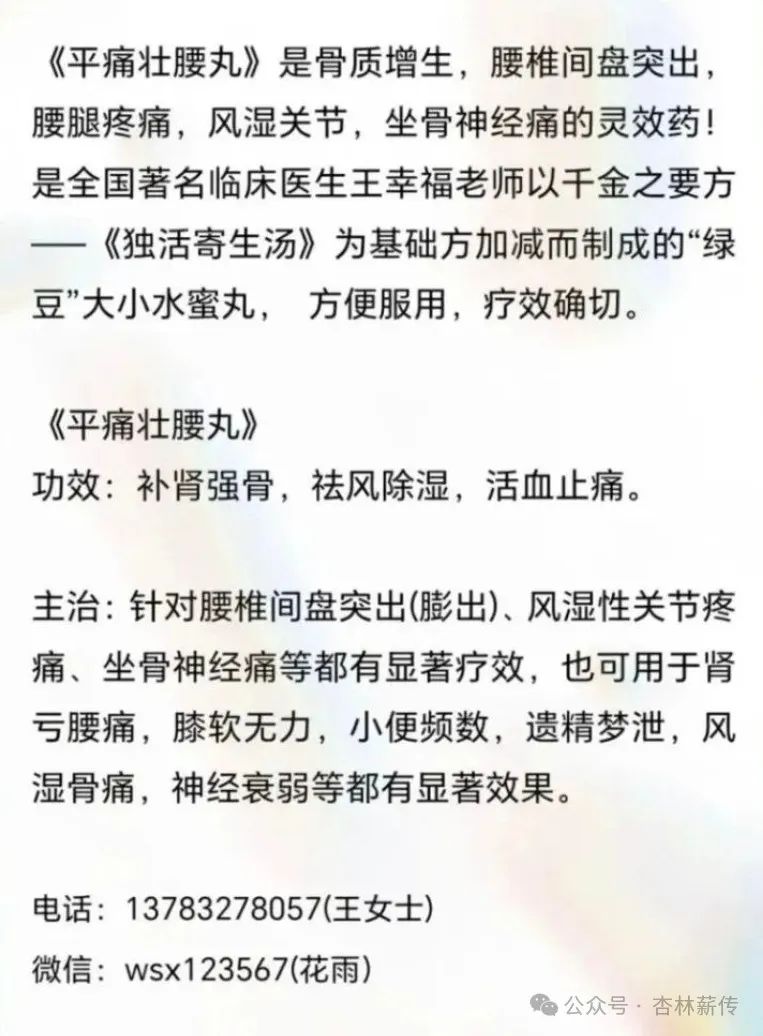
Note: Through the use of this formula, I have experienced that it quickly resolves blood stasis and swelling, with a high cure rate and low recurrence. Perhaps this is what we in Chinese medicine refer to as “when blood is not smooth, it becomes water.” This formula originally consists of Si Wu Decoction, but in clinical practice, I replace Shu Di Huang (Rehmannia) with Sheng Di Huang (Fresh Rehmannia) and Bai Shao (White Peony) with Chi Shao (Red Peony), thus forming Sheng Si Wu Decoction, which I have clinically found to have the effect of eliminating soft tissue and mucosal edema.
The first patient used the original formula’s Shu Di Huang due to poor spleen and stomach function, resulting in unformed stools and occasional diarrhea, so I did not use Sheng Di Huang. If it were not for spleen and stomach deficiency and cold, I would recommend using Sheng Di Huang for better results. The third patient had additional herbs based on a verified formula; upon analysis, Chuan Niu Xi (Cyathula) promotes blood downward, guiding the medicine downward, and Niu Xi (Achyranthes) is related to the knee, which is somewhat analogous in its application; Tu Fu Ling (Smilax) promotes joint function and reduces swelling; Chen Pi (Tangerine Peel) facilitates the drainage of subcutaneous fluids; all herbs with skin are used to promote water drainage and reduce swelling; as for Fang Feng (Siler), its role can also be understood as preventing wind evil invasion; the role of Mu Hu Die (Butterfly Pea) is not clear to me; it can treat throat swelling and pain, but can it also treat joint swelling and pain? I await readers to provide more precise functions; at that time, it was only used as a verified formula.
